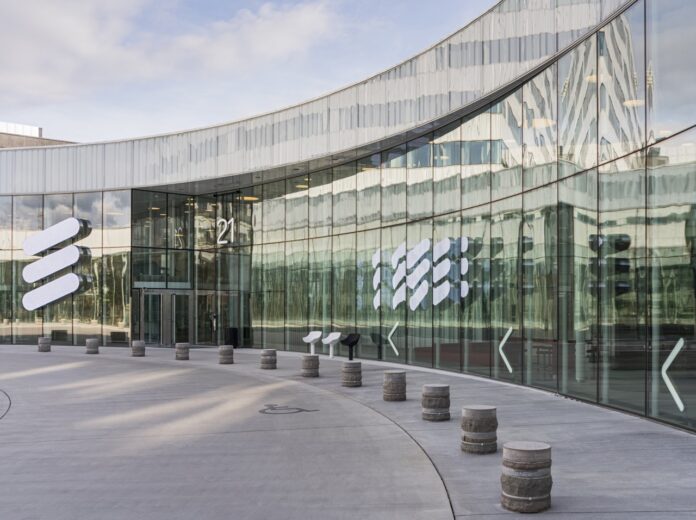The 5G Standalone field trial happened in Ericsson’s Plano, Texas facility
Ericsson is claiming to have set a data speed record on 5G CBRS spectrum, exceeding 1 gigabit per second (Gbps) for a single user device. The 5G Standalone (SA) field trial happened over a live CBRS network hosted at Ericsson’s North American headquarters, located in Plano, Texas.
“The network where this trial took place is supported by a 5G core network as part of the 5G Distributed Innovation Network at Ericsson’s facility in North Texas. The network used the Radio 4408 for outdoor CBRS connectivity and the Radio Dot 4459 for indoor CBRS connectivity. Indoor coverage has been challenging for cellular networks, and this is the first time that indoor, over-the-air coverage through a shared spectrum has reached such a high data rate,” said Ericsson.
Ericsson’s Radio Dot systems are designed to deliver effective indoor 5G coverage in buildings at least 50,000 square feet. The Radio Dot 4459 unit supports both CBRS and C-Band deployments. It sports 4×4 MIMO and 4G and 5G mixed-mode operation. What’s more, it leverages the entire 150 MHz of CBRS band, and supports up to five-component carrier aggregation (5CC) on 4G and 5G carriers of up to 100 MHz, according to the company.
Ericsson said the test was coordinated with the OnGo Alliance (the rebranded CBRS Alliance), a coalition of more than 185 member companies that includes mobile operators, managed service providers (MSPs), mobile virtual network operators (MVNOs) and others.
Ericsson sees the delivery of 5G over CBRS spectrum as an important factor for enterprise adoption, especially in vertical markets like healthcare, energy and transportation.
“It will spur the proliferation of private networks and further propel the Industry 4.0 evolution,” said the company.
Enterprise adoption isn’t the only place CBRS is making an impact. In June, Verizon announced that it was adding 5G service via CBRS. Verizon said it will support 5G on both shared spectrum and Priority Access License (PAL) CBRS spectrum, an area of heavy Verizon investment in 2021. The company made the announcement after testing 5G service with Ericsson. CBRS spectrum provides some flexibility for Verizon’s needs, according to Bill Stone, Verizon’s VP of technology development and planning.
“There is certainly interest in using it for multiple use cases, so we’re also planning to use CBRS as part of our strategy to in-building deployments, and that fits into our longer-term plans as well with private networks and on-site networks,” Stone said.
CBRS presents some thorny deployment issues; it is constrained by significantly lower transmit power limitations than cellular network operators usually work with; plus the fact that licenses are county-level and that PAL holders are limited to aggregation of 40 megahertz of PAL spectrum.
“The biggest clash we are seeing at the moment around CBRS is the [Effective Isotropically Radiated Power, or EIRP] requirement, which is determined … by the output and the antenna gain,” explained Baha Badran, global head of engineering for antenna OEM Taoglas. “The EIRP is quite low.” This means, he continued, that “one of the biggest challenges we have from the antenna design perspective is, the higher in spectrum you go, the gain tends to also increase — so how can we limit the gain? The other big challenge is, how can we have an antenna that works for this band, CBRS, and continues to serve other bands?

